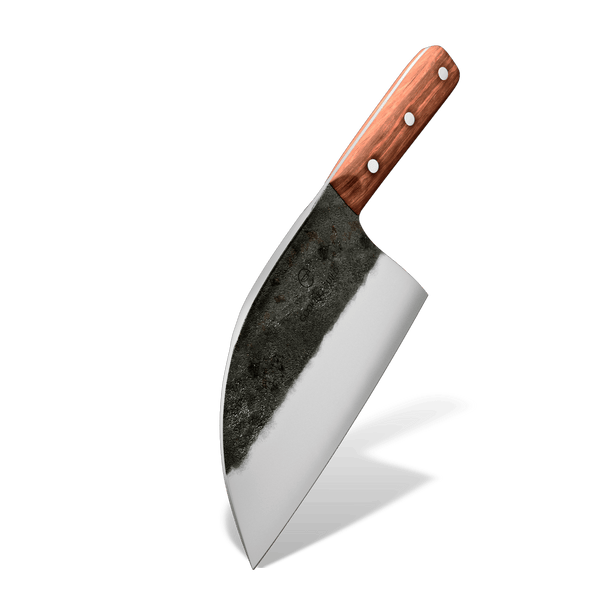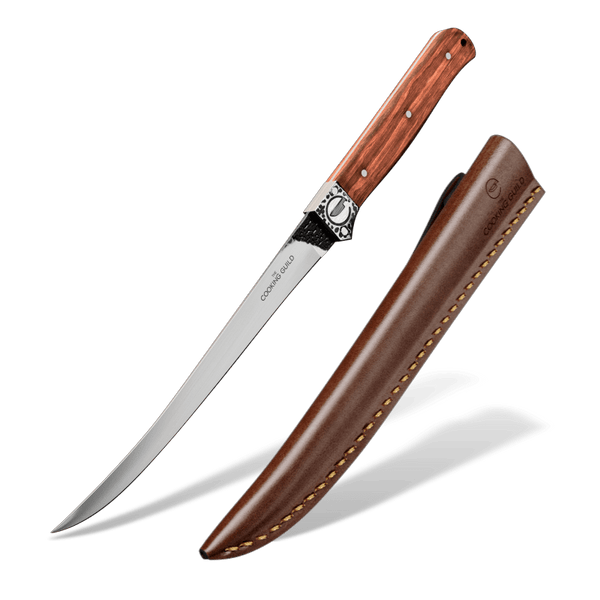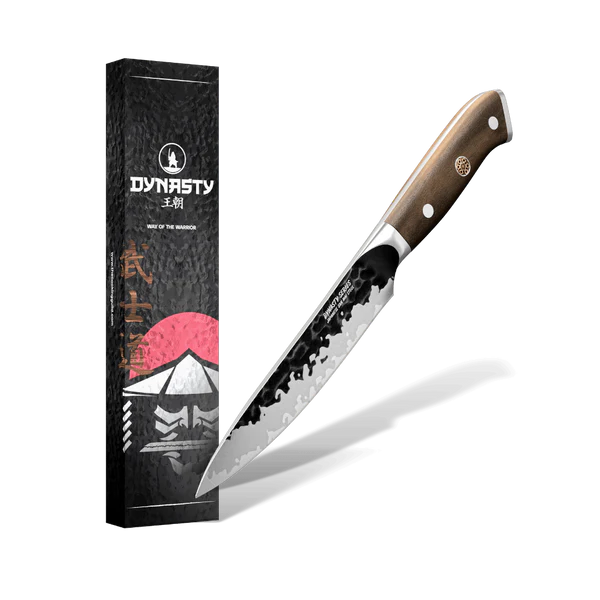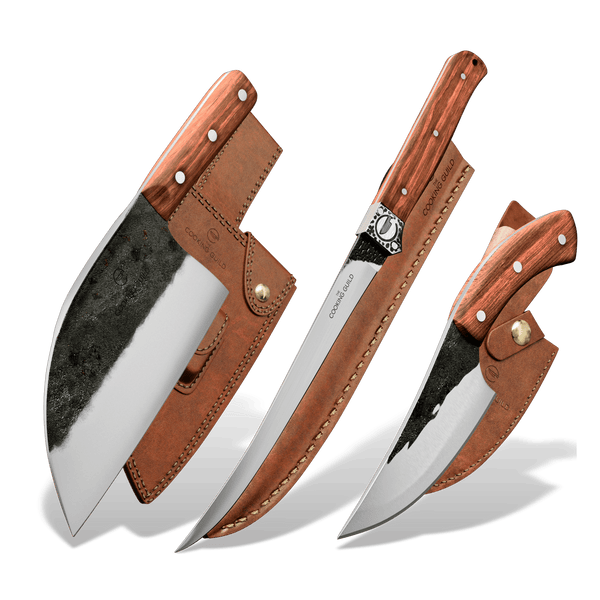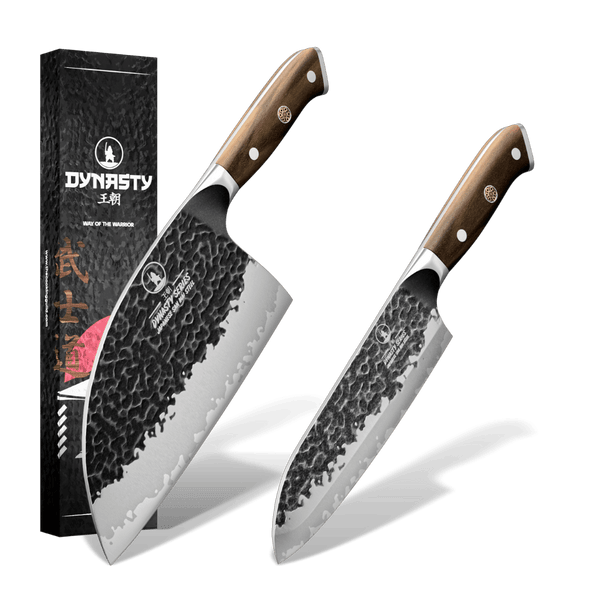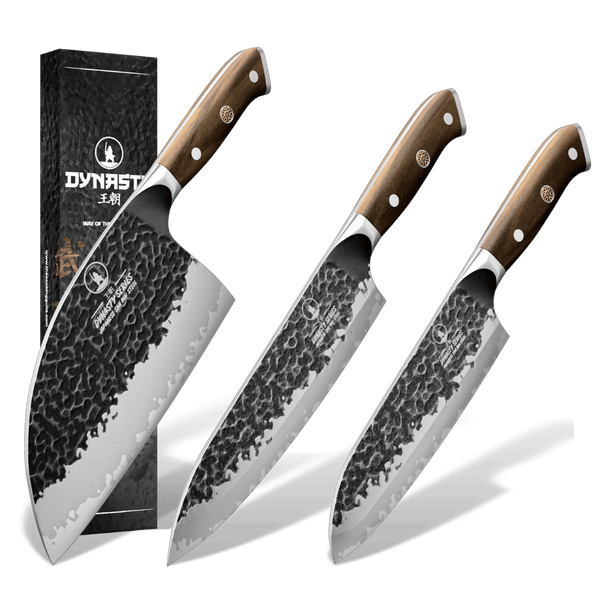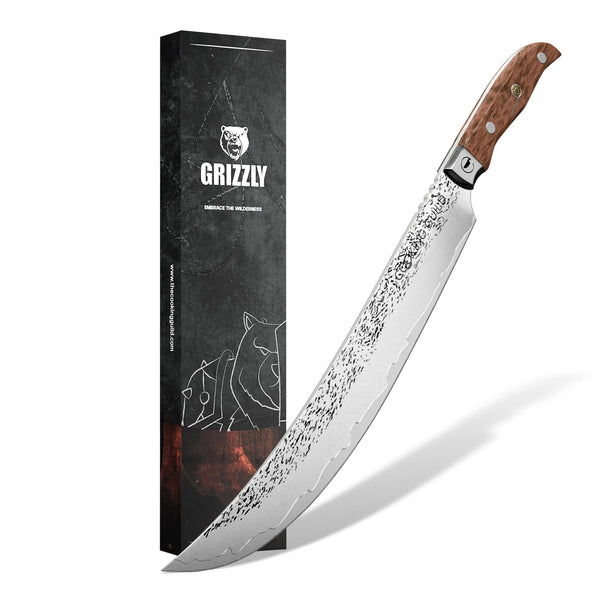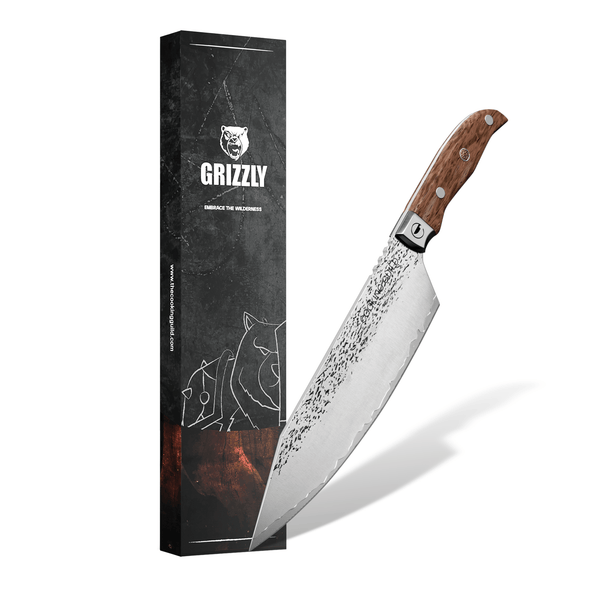Sharpening steels, often referred to as honing rods or honing steels, are indispensable utensils in the kitchen for maintaining and sharpening knives. They are vital in keeping your knives razor-sharp and ready for action, making them an essential tool for any culinary aficionado or seasoned chef.
By the conclusion of this blog, you'll have a comprehensive understanding of what sharpening steels are and how they can assist in preserving the form and angle of your knives.
Understanding the Honing Rod

A honing rod is a multipurpose device that maintains the sharpness and durability of your knives. It assists in adjusting the blade's edge and eliminating any minor burrs that might have formed during usage. Honing rods are typically constructed from steel, ceramic, or diamond, with each material providing distinct advantages for the sharpening and honing of knives.
Selecting the Right Honing Rod
When it comes to utilizing a honing rod, it's crucial to choose the appropriate one for your specific knife. For instance, carbon stainless steel knives can be honed using either steel or ceramic rods, whereas serrated knives necessitate specially designed honing rods for serrated edges. To ensure effective sharpening along the entire blade, the honing rod should be slightly longer than the knife blade you're honing.
The Functionality of Honing Rods in Blade Realignment

Honing rods play a pivotal role in preserving the sharpness of straight-edged knives, including chef's knives, utility knives, and paring knives. These tools work by adjusting the minute teeth along the blade's edge, thereby boosting its cutting efficiency and prolonging the knife's durability.
Consistent use of honing rods on your knives lessens the necessity for harsher sharpening techniques, which can strip more material from the blade and reduce its longevity.
In selecting a honing rod, you should take into account the type of material that will best meet your requirements. Steel rods, known for their durability, are suitable for routine maintenance to maintain the blade's peak performance. For honing and sharpening delicate knives, ceramic rods are the optimal choice due to their hardness, which surpasses steel, and their ability to deliver a refined edge.
Diamond-coated honing rods exhibit exceptional sharpening capability but are most effectively used when revitalizing blunt or impaired ceramic blades.
Proper storage of knives is crucial in maintaining their sharpness and overall quality. Using knife blocks or magnetic knife holders can help keep your knives orderly, readily available, and safeguarded against damage.
Understanding the Distinction Between Honing and Sharpening
The Art of Honing
Honing is a process that involves the readjustment of the minuscule teeth on the blade's edge to recover its sharpness. This task is executed using a tool known as a honing rod or honing steel, which aids in preserving the knife's edge in between sharpening sessions.
Honing is particularly suited for straight-edged knives such as chef's knives and utility knives. Regular honing is advised since constant use can cause minor misalignment of the blade. Utilizing a honing rod realigns the blade, ensuring maximum cutting efficiency.
Ceramic honing rods are favored due to their capacity to clean the edge and eliminate any burrs or irregularities. Consistent honing prolongs the period between sharpening and allows your knives to perform optimally.
The Act of Sharpening
Sharpening becomes a necessity when the blade turns dull or suffers damage, requiring more forceful methods to regain its sharpness. Different knife types may necessitate distinct sharpening techniques. For example, serrated knives possess a unique edge layout, and sharpeners specifically designed for these edges should be used to preserve their utility.
When sharpening a knife, it's essential to take into account the type of steel from which it's made. Carbon stainless steel knives demand particular sharpening techniques to prevent harming the blade. Moreover, the angle at which you sharpen the blade can influence its cutting ability.
Both professional chefs and home cooks often favor sharpening sticks or ceramic rods due to their adaptability and simplicity. These tools provide effective sharpening while maintaining the correct angle.
By regularly honing and sharpening your knives, you ensure they remain sharp, efficient, and ready to tackle any culinary task!
Determining the Right Time to Hone Your Knives
Are you uncertain about when to hone your knives? Let's unravel this mystery together.
As a standard gastronomic guideline, it's advisable to hone your knives consistently, even before they visibly lose their sharpness. Regular honing assists in preserving the alignment of the blade's edge and lengthens the intervals between sharpening. Both culinary professionals and domestic cooks often hone their knives prior to every use, or at least weekly, depending on the frequency of knife usage.
A decline in the cutting efficiency of your knife is a clear sign that it requires honing. If you observe that your knife is no longer slicing through food with ease or is skidding off the surface, it's a sure sign that the edge alignment of the blade has been disrupted. Honing the knife will adjust the microscopic teeth on the blade, reinstating its sharpness and slicing proficiency.
The type of steel utilized in your knife is another aspect to keep in mind. Knives made from carbon stainless steel may require more frequent honing due to their softer blade structure. These knives can quickly lose their edge alignment, particularly with continuous use. Honing them before each use or every few days can help sustain their sharpness.
Furthermore, for those who frequently use their knives like chefs and home cooks, honing is absolutely crucial. The more a knife is used, the higher the probability of its blade edge misaligning. Honing prior to each use or regularly during intensive kitchen sessions can ensure that the knife remains in peak performance condition.
Mastering the Use of a Honing Rod
Honing your knives may appear daunting if you're new to the culinary world. However, these simple steps will help you hone your knives without any complex procedures.
Maintaining and sharpening your knives correctly is integral to preserving their sharpness and functionality. Here's a comprehensive guide on how to successfully hone your knives.
Prepare Your Equipment
For effective knife honing, you'll need a ceramic honing rod, a cutting board, and your kitchen knives. Select the Appropriate Honing Rod: Opt for a steel honing rod as it yields superior results and is compatible with various kitchen knives! Stabilize the Honing Rod: Position your cutting board on a steady surface. Hold the honing rod vertically, ensuring it's secure and won't shift during the honing procedure.
Correct Grip and Angle
Grasp the knife handle tightly with one hand and position the blade against the honing rod at an angle of 20 degrees. Consistently maintain this angle throughout the honing process.
Begin Honing
Apply slight pressure and glide the blade along the honing rod in a smooth, sweeping motion from the heel to the tip. Make sure the entire cutting edge comes into contact with the rod.
Repeat the Steps
Execute the honing process on both sides of the blade, alternating between each stroke. Aim for about 5 to 10 strokes per side. Check the Sharpness: After honing, cautiously run your finger along the edge of the blade to detect any burrs or flaws. If required, continue the honing process until the knife feels adequately sharp.
Pro Tips
- Consider factors such as blade material, sharpening technique, and frequency of honing when caring for your knives.
- Store your knives in a knife block or on a magnetic knife strip to safeguard their edges and ensure safety.
- Utilize a separate honing rod for serrated knives, like bread knives, to uphold their sharpness.
The Superiority of Steel and Ceramic Honing Rods Over Diamond Steel Rods
Steel honing rods are esteemed by numerous professional chefs and knife connoisseurs for their exceptional performance and longevity when compared to ceramic and diamond honing rods. Here's the reasoning behind this preference.
Achieving Perfect Sharpness
Steel honing rods excel in creating flawlessly sharp edges on a variety of knives, including chef's knives and paring knives. The honing process using a steel rod aids in restoring and refining the knife's cutting edge, ensuring peak performance in culinary tasks.
Considerations When Choosing
When selecting a honing rod, aspects such as efficiency, versatility, and durability are important. Steel honing rods fulfill all these criteria, making them a favored tool among both professional chefs and home cooks.
A Trustworthy Kitchen Companion
Regarded as an indispensable kitchen tool for maintaining knife sharpness, steel honing rods play a critical role in routine knife care and should be a staple in every kitchen, along with other essentials like cutting boards and knife storage solutions.
Maintaining the Edge
Steel honing rods effectively readjust and straighten the edge of the knife, rectifying any minor bends or misalignments that occur with regular use. This process guarantees consistent cutting efficiency and extends the intervals between sharpening.
Exceptional Durability
Particularly those made from superior quality carbon steel, steel honing rods boast remarkable durability, making them enduring kitchen allies. Their sturdy construction withstands frequent use without sacrificing performance.
Adaptability Across Various Knife Types
Steel honing rods are compatible with various types of knives found in knife sets, including utility knives, Japanese-style knives, boning knives, and more. Their adaptability allows for effective honing and maintenance of different blade styles and shapes.
Proven Sharpening Method
Providing a time-tested steeling technique, steel honing rods have been trusted for generations. The honing process with a steel rod is safe and straightforward, even for novices, ensuring consistent sharpness and optimal cutting results.
User-Friendly Handle Design
Many steel honing rods feature an ergonomic handle, offering a comfortable grip and precise control during the honing process. This design aspect improves user experience and minimizes fatigue during prolonged honing sessions.
The Best Honing Rod in the Market

The Nomad Series Honing Rod, crafted from high carbon steel and cloaked with a layer of Chrome, stands out as the best in the market. This honing rod is not only functional but also aesthetically pleasing, with its handle made from mountain burl wood fused with deep sea blue epoxy resin.
Its ergonomic handle design ensures comfort during use, making it an ideal tool for honing a wide variety of knives. The 24.5cm rod length is perfect for maintaining the razor-sharp cutting edge of your knives, ensuring they remain at their peak performance.
Pros:
- Made from durable high carbon steel
- Chrome coating for extra wear resistance
- Beautiful handle design with mountain burl wood and blue epoxy resin
- Ergonomic handle for comfortable use
- Suitable rod length of 24.5cm for various knives
Cons:
- Might be too long for easy storage
- Likely more expensive than simpler models
FAQ
What is the purpose of a honing rod?
A honing rod is designed to realign the edge of a knife blade, thus preserving its sharpness and enhancing its slicing capabilities.
How does a honing rod differ from a sharpening rod?
While a honing rod's function is to reposition the edge of a knife, a sharpening rod's purpose is to grind away metal to truly sharpen the blade.
Do I need to use a honing rod?
Although it's not mandatory to utilize a honing rod, it's suggested to do so in order to sustain the sharpness and durability of your knives.
Get Your Cooking Guild Honing Rod Today!

